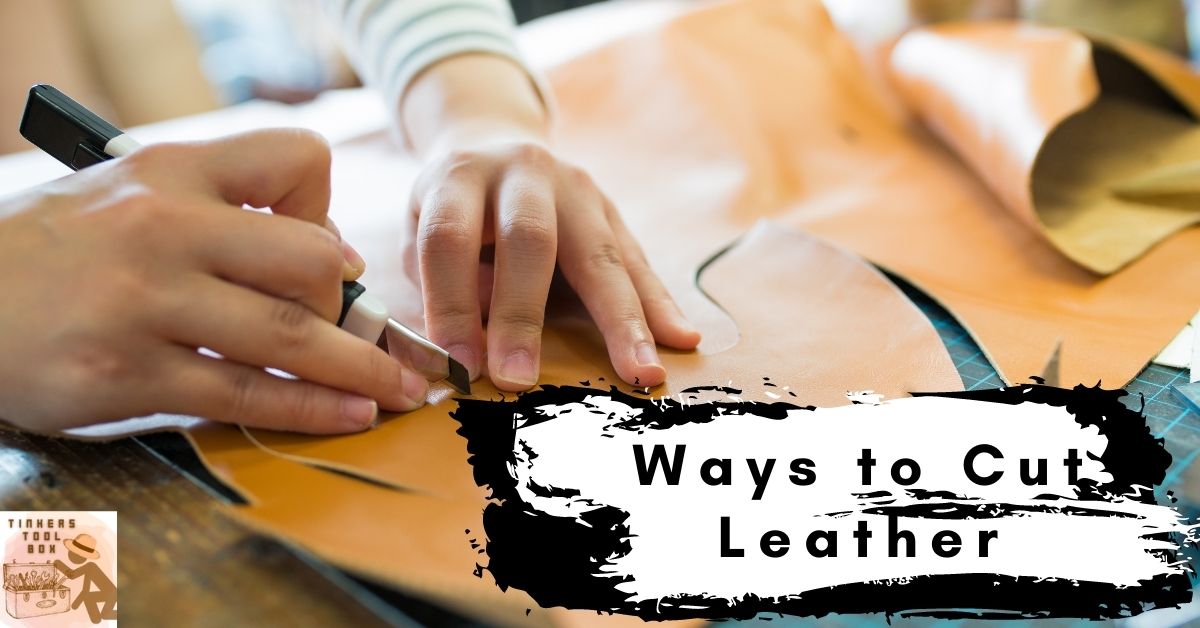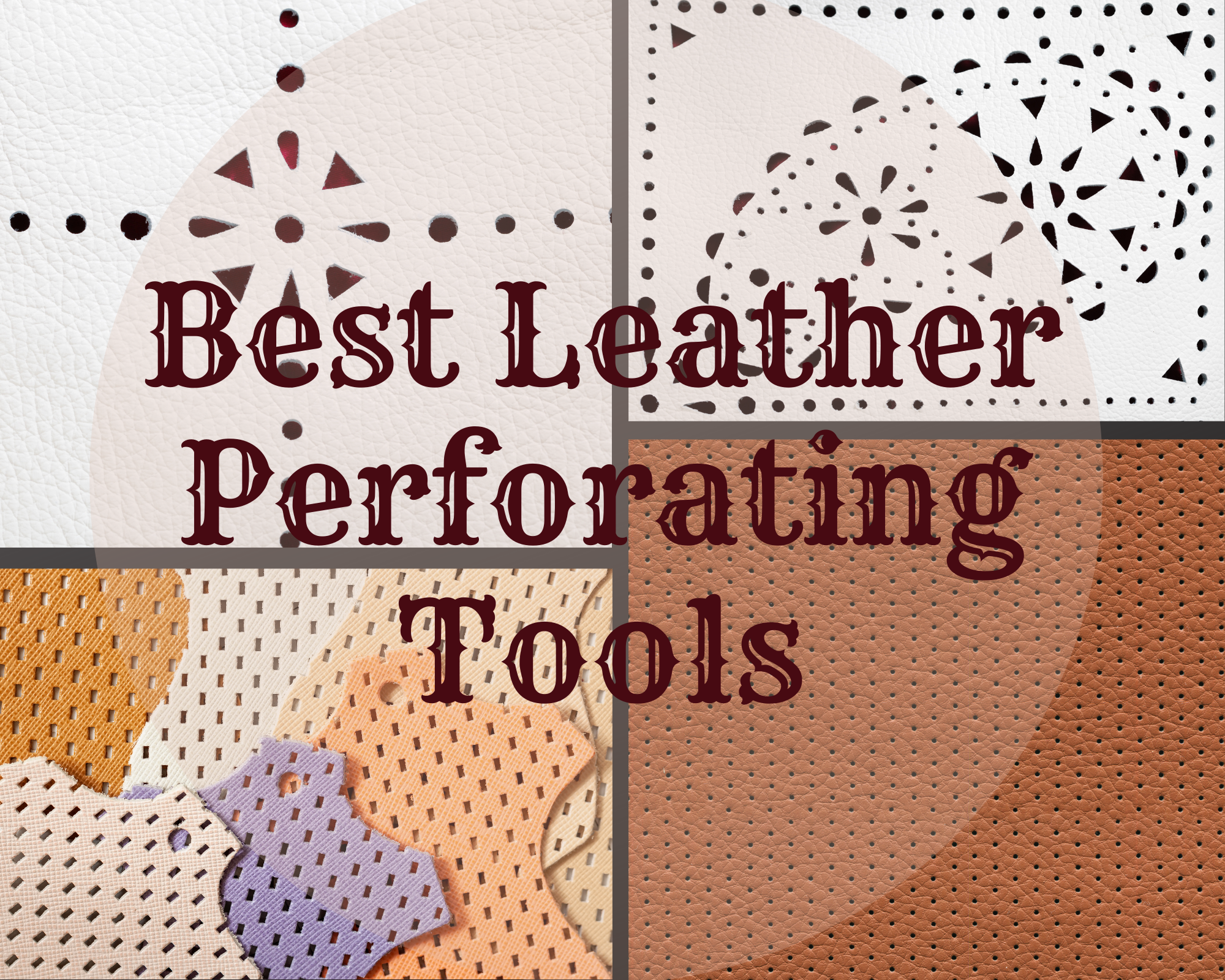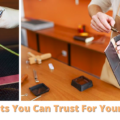One of the essential parts of leatherworking is knowing how to cut leather properly. Now, cutting leather is not challenging, but doing it right is. The cuts should be perfect since they can significantly affect the result of your leather project. Even a minor slip of your ruler can mess with your burnishing process and make your stitching lines not straight as they should be. In this article, you will know the proper way on how to cut leather.
1. Make Sure You Have the Proper Leather Cutting Tools
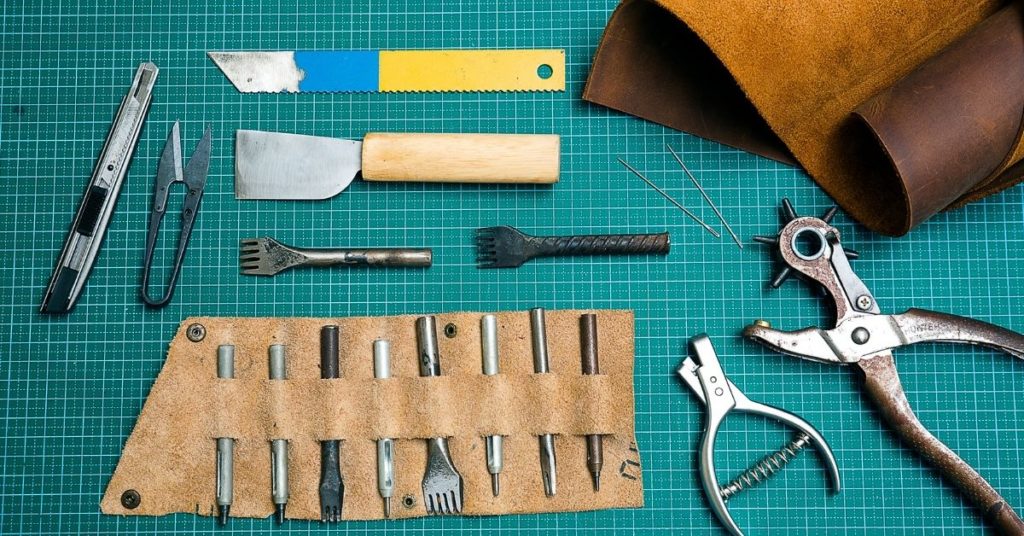
When it comes to cutting leather properly, you would need the right cutting tools to do so. Tools contribute not only to the pleasure and ease of the cutting process but also to the finished product’s quality. The first thing that you should do is determine what tools for cutting are needed.
Some essential leather cutting tools include a utility knife, a rotary cutter, and a craft or hobby knife. There are a few common types of tools that are used for leather cutting which are heavy-duty scissors, head knives, hole punches, swivel knives, skiving knives, and V-gouge knives.
If you choose to use a swivel knife and are also a beginner, here’s the perfect article for you to read. Now, if you are a beginner, you might want to keep a first aid kit nearby, just in case something goes wrong when you are cutting leather.
With your leather cutting tools, you need to make sure that it is effectively sharp. When you have a dull cutting knife, it will not cut your leather as cleanly as you want it to be. It will leave unsightly and uneven jagged edges, which you don’t want to happen.
If your leather cutting tool gets dull, it is best to sharpen it as frequently as possible so that you can get the best possible cut.
Of course, you are not able to learn how to cut leather without the leather material itself. For most leatherworking projects, it is best to use a versatile material like economy vegetable tan leather.
2. Keeping Your Knives Always Sharp for Leather Cutting
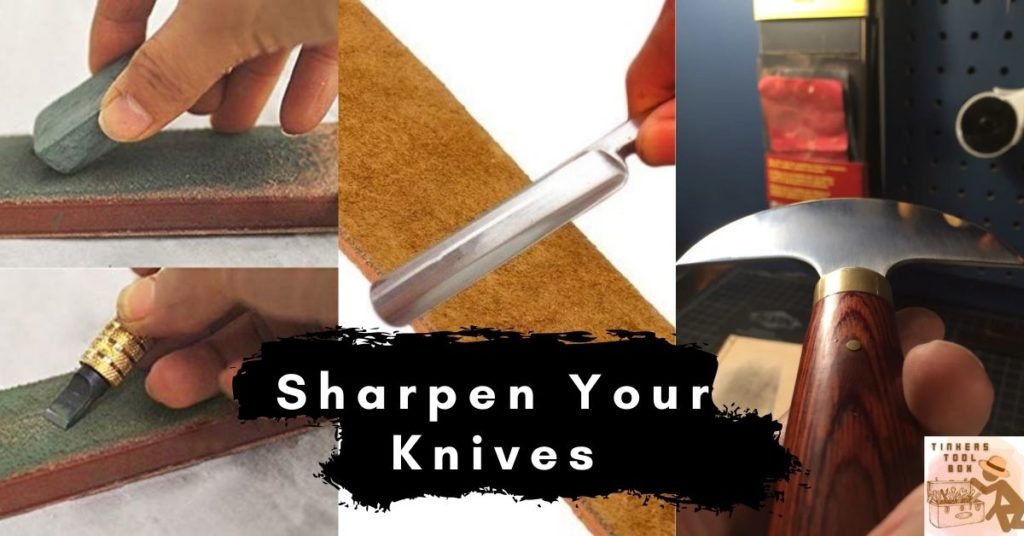
When it comes to cutting leather, this is the most important factor that you need to take note of, keeping your knives sharp. When you have sharp knives, you will have clean-cut results, and there is less chance that you will make mistakes since you are not going to struggle to make the cut.
If you don’t have it as a habit, make sure that you strop your knives before or after each time you sit down and do your leatherworking projects. Stropping is not hard to learn, and doing this will make sure your knives will stay sharper much longer.
Eventually, you will need to spend some time sharpening your knife. When sharpening your knife, it is important that your knives are made with high quality to hold an edge. If not, you will find yourself needing to sharpen your blade too often and get the worse cuts possible.
Now, it can be hard to keep this as a habit every time you are doing different leatherworking projects. However, it is a must that you sharpen your knives every before and after use so that you can get the best possible result for your leather cutting needs.
3. Preparing to Cut Leather: Ensure You are Ready
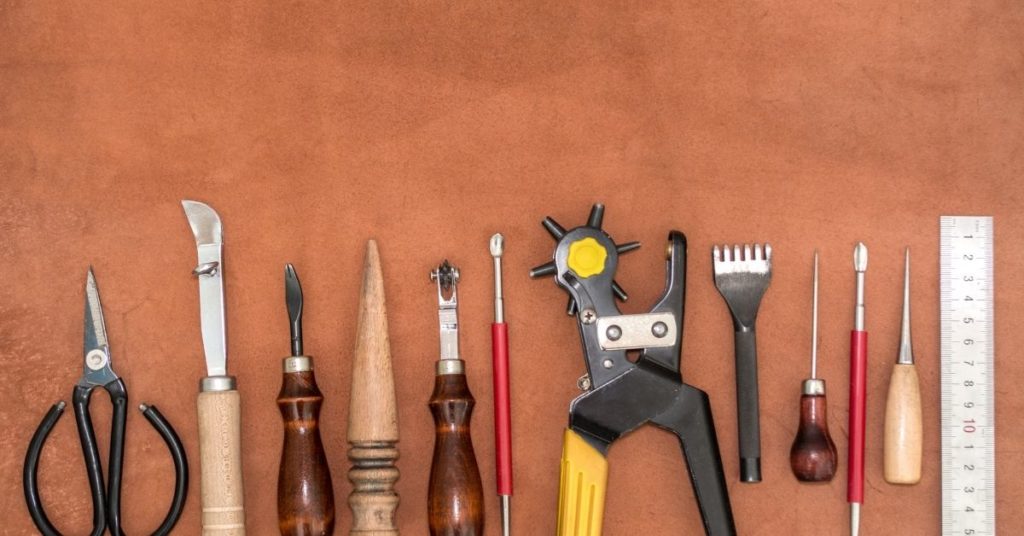
Depending on what you are cutting out, it is always best to lay it out and mark it on the leather before you cut. Let’s say you are cutting out a wallet that has multiple pieces, and it is best to check out the grain side of the leather and find a nice area without major imperfections.
Once you’re done with that, flip the leather over, then copy the pattern using a pen on the flesh side, and lastly, cut it out from that. When you don’t want to mark your leather with a pen, another option that you can do is to cut the pattern out of thin plastic or cardboard.
Then, you can use those edges as a guide for cutting your leather correctly and nicely. It is best to make a stiff pattern or template if your pattern has curves. It is easier to cut on the grain side, but you can also cut from the flesh side.
On the flesh side, you just have to be more patient and take the cutting process slowly since it is the rougher cutting area of the leather. Making sure that you are prepared before cutting will result in the best cuts possible for your leatherworking projects.
4. The Best Way to Cut Thin Leather: What You Need to Do
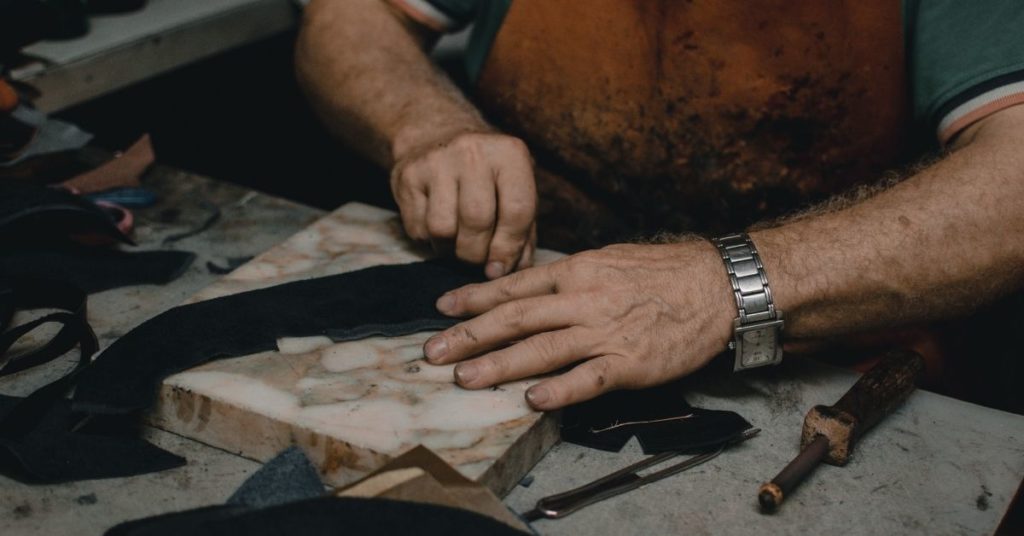
When cutting thin leather, it is best to have leather with a thickness of 1mm or less when using a rotary cutter. If you are using a hobby knife, it can pull and crease the leather, which will make it challenging to get a straight line because it is so fragile and more prone to moving.
A rotary cutter will allow for even pressure to be applied on the larger area on the leather. As I’ve mentioned above, it is crucial that you make sure your blade is nice and sharp when learning to cut leather properly. It will give you a crisp, smooth line with only a few mistakes from happening.
To cut the thin leather, lay it down with the grain side facing up, and then place your ruler on top of the leather. If you haven’t planned your cut with a pen or a piece of material, the edge of a ruler will come in handy for your cut.
For the best result possible, keep the rotary cutter as close to the edge of the rules as you can get.
5. Cutting Leather Straight: Getting the Best Result Possible
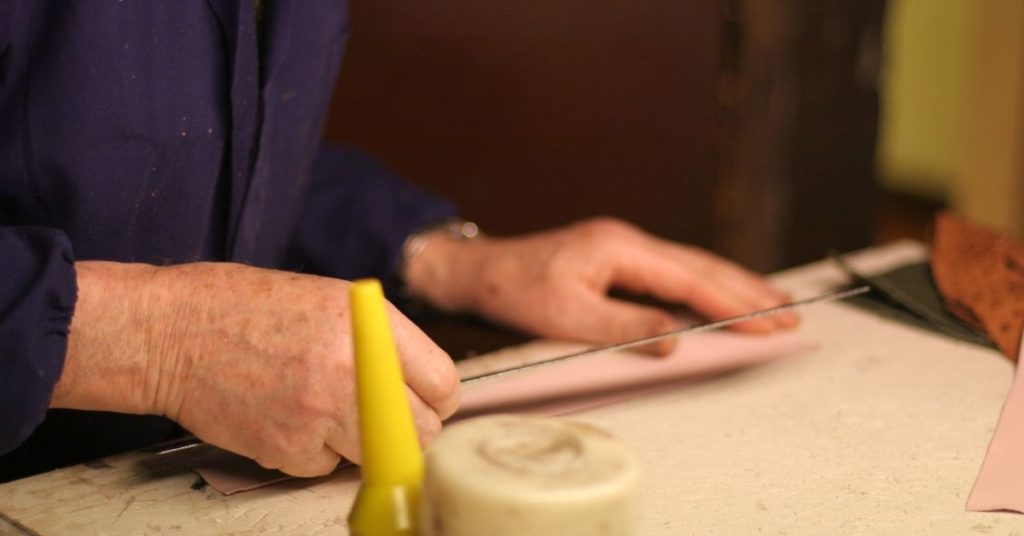
Cutting thick leather straight, you would need to have the grain side up once you have laid the leather down. Place the ruler on top of the leather and use the edge as your guide when you are cutting. Handle your cutting tool slowly and gently while dragging it along the cut line.
Patience is important in this process since it will all be worth it for a straight and perfect cut into your leather. When the leather is thick, it will normally take between two to four passes to cut through the leather completely.
Make sure you keep your ruler still in the same location at all times and ensure to keep the edge of the knife against the ruler. When you are not so keen on cutting leather, you can use pre-cut blanks like economy-grade vegetable tan belt blanks.
Though cutting leather can be a rewarding venture, there is never a shame in taking a shortcut when you are doing your leatherworking projects.
6. Cutting Curves on Leather: Some Tips You Need to Know
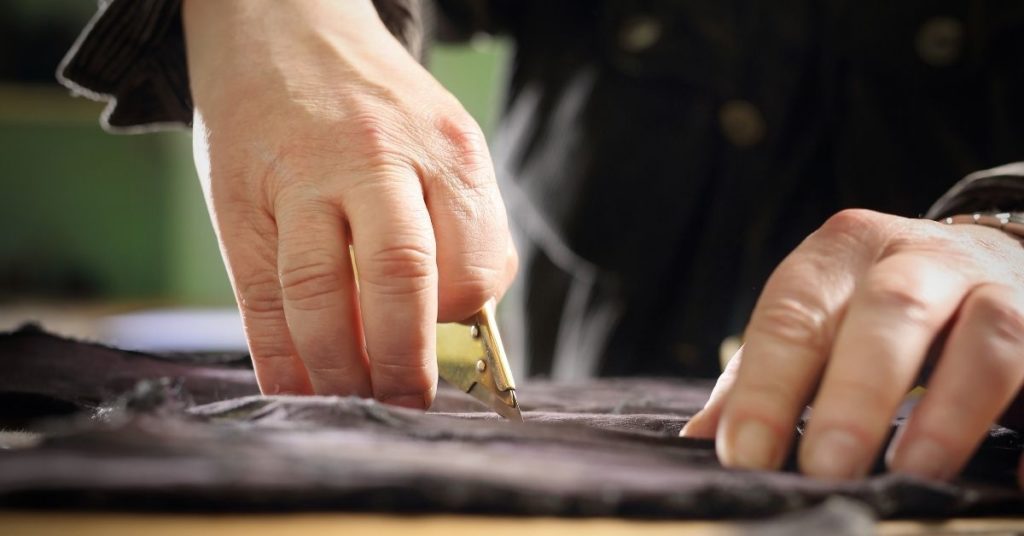
Cutting curves on leather is one of the techniques that will elevate your leathercraft skill set. It will help bring you from boring two rectangles stitched together into flowing organic shapes that will set the design apart from the rest.
One of the toughest things when it comes to cutting leather is cutting smooth curves, especially when you are just beginning with leatherworking. There are a couple of things that you would need to keep in mind when you are cutting your curves on leather.
Whenever you are cutting curves on leather, never use a dull blade. Make sure to replace your blade or give your blade a nice polish before attempting to cut curves on leather. As mentioned above, the sharper your blade is, the easier it will be to glide through the leather and avoid any jagged edge.
The best way to get the feel of the cutting curve is when you have a solid reference that you can follow as a template. Using standard coins and metal washers will work wonders for this purpose. You can line your curve reference up into the corner of your leather and follow along the edge with your knife.
When cutting curves, you have to be slow and mindful of your blade positioning at all times. It is very easy to under-cut or over-cut the edge of your leather. There will be times when your hand will naturally want to lean in one direction but always remember it is important to keep it straight.
Make sure that you slow down, keep your eye on the blade and ensure that it isn’t leaning one way or the other while you are cutting your curve.
Another thing to remember is to guide with your body and not with your wrist. Naturally, when you are cutting, it is easy to be guided with the wrist, which can easily lead to bad results due to a limited range of motion.
A method that you should be doing is to keep your elbow or your arm close to your body then pull the cutting motion with your shoulder. It will help you keep track of what you are cutting and, more importantly, the blade straight.
Lastly, make sure that you keep multiple lights passes, especially with thick leather. It can be hard to cut a clean curve in one shot in thinner leather, what more when you have thick leather. The more pressure that you place on the blade, the greater the chance you will have of messing up.
Always take your time and make as many passes as you need to complete the perfect curved cut possible for your leatherworking project.
7. Always Keep Your Knife Perpendicular When Cutting Curves
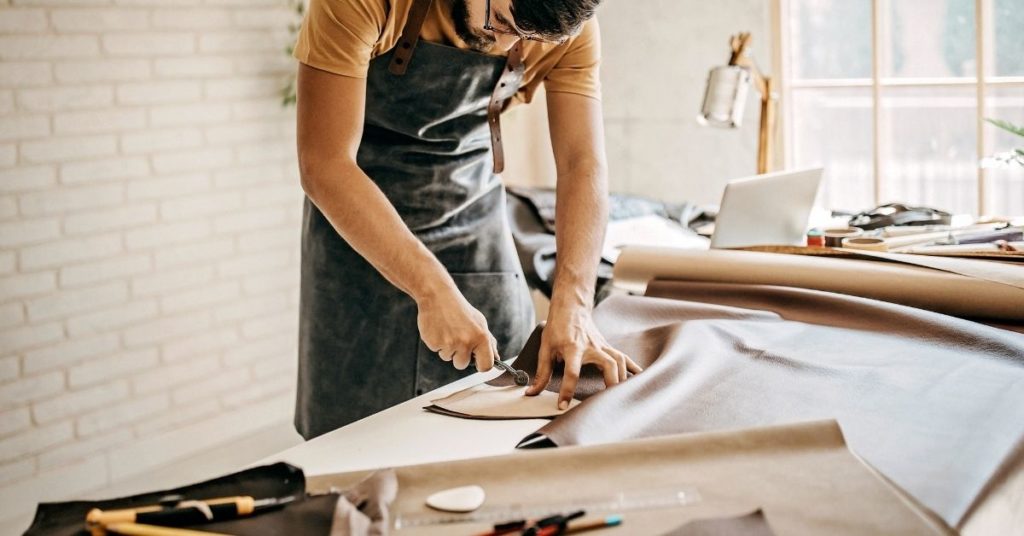
Now, keeping your knife perpendicular is not hard to do, but it is easy to forget or pay much attention to, especially when you are just starting with leatherworking. When you don’t keep your knife at a perpendicular angle, your cuts will look straight whenever you are working with tricky corners.
Holding the knife at a perpendicular angle will make sure that your edges line up perfectly and will reduce the amount of sanding that you have to do during the burnishing process. When you are having trouble with this, it is best not to over-extend your arm when making cuts.
Like I’ve said above, move with your body and not with your wrists. At most times, your hand naturally starts to roll as your elbow gets close to locking. When you are cutting tricky corners, you also have to be aware of your body so that you can get the perfect result possible for your projects.
8. Cutting Leather with Scissors: When You Don’t Have the Right Tools
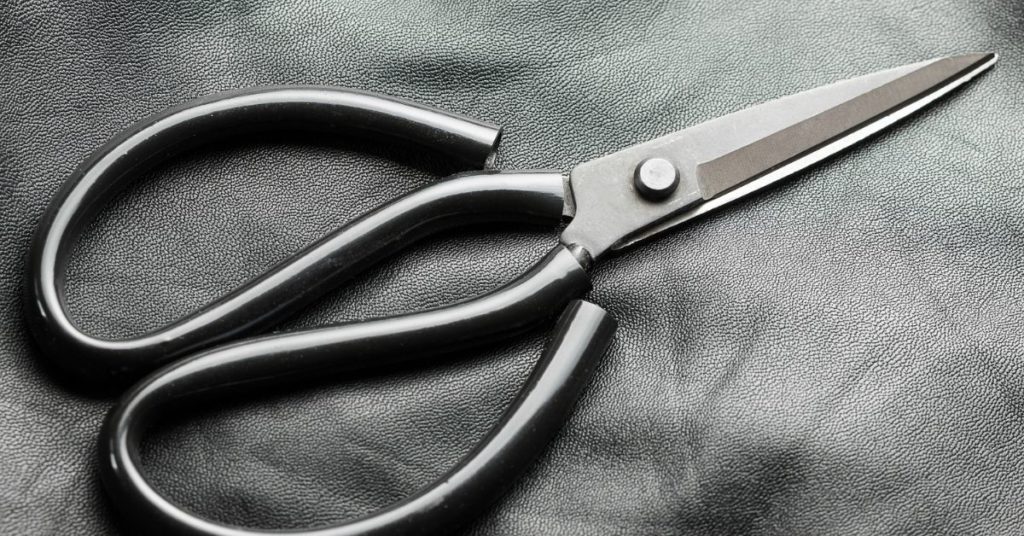
When cutting leather, using the scissors can sometimes work better for different situations, and some are a matter of personal preference. You can either use plain scissors or leather shears with thinner, more pliable leather.
They also work perfectly if you have to cut curved lines. Now, leather carries the same weight of stiffness and texture, and there is no hard and fast rule when the leather becomes too thick to cut effectively with scissors.
You can test out to see if scissors would work on thick leather, but in general, leather above nine or ten ounces will be too thick to cut.
When you choose to cut leather with scissors, there are a few things that you should keep in mind. First, try to cut against a flat surface mostly, and don’t cut up in the air as much as possible. The only time that you would cut in the air is when you are cutting very small details.
Second, you need to make sure that you keep your scissors at the right angle to your leather and cutting surface. It will help you create a cut edge that is squared off and not beveled.
Lastly, in order for you to create clean lines, you have to make sure to cut with long strokes and not short choppy ones. Make sure that you practice cutting with scraps first so that you don’t ruin your projects and waste leather material.
9. Cutting Leather with a Machine Cutter: The Easier Way
As we all know, machines have their own limits when it comes to functionality. When you use a leather cutting machine, you have to consider one important factor, which is the thickness of the leather. There is no point in purchasing a machine when you only need to cut less than an inch thickness of leather.
Before purchasing a machine, you have to check the specifications and features that it offers. Make sure that it will match your needs when it comes to cutting leather and if it meets your budget as a leatherworker.
The number one benefit of using a cutting machine is the ease of use. For beginners, it is highly advisable to get a less complicated leather cutter and just the small tools that I’ve mentioned above. By doing this, it can help you get the hang of cutting leather without any complexities of understanding the machine mechanisms.
Every professional leatherworker prefers to get a machine that is simple and convenient to operate. It will also save you a lot of effort and time when it comes to your leatherworking projects.
Circuit Maker: The Best Machine to Use. This is one of the best leather cutting machines that you can use for your leather projects. It is the best to use because it is the only model that uses the knife blade. The knife blade can cut through thick and dense materials like thick leather.
The best thing about this is it doesn’t only cut leather but other materials as well. So, if you plan to have other craft projects, then this is the best machine to use. The Circuit Maker can cut thicknesses from two to three ounces and four to five ounces of leather.
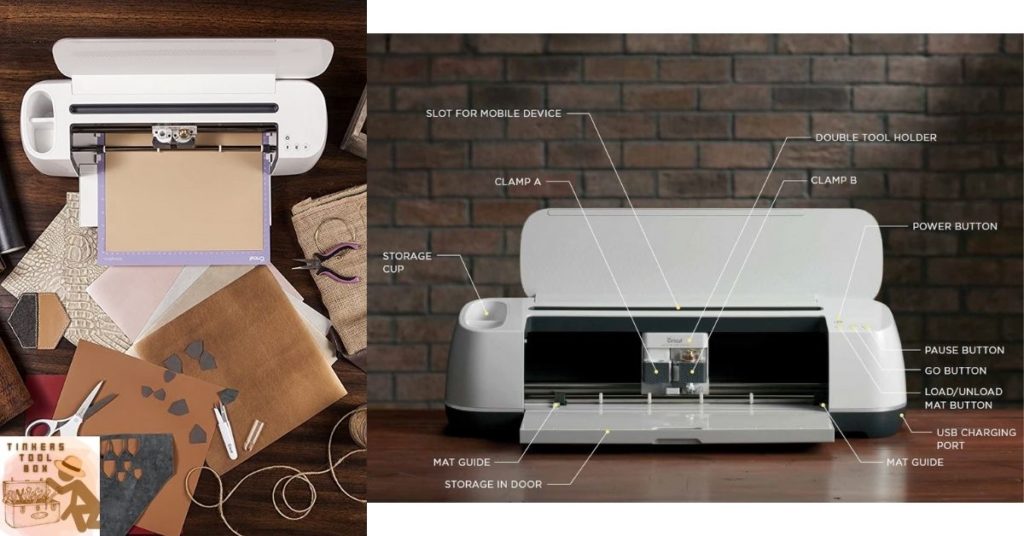
When you are tooling leather, then you can cut thicknesses of two to three, four to five, and six to seven ounces. Also, it boasts other attributes aside from cutting, such as score, deboss, and even engrave. It also comes with a free design app that is compatible with devices like iOS, Android, Mac, and Windows.
The best part about this is it comes in different colors that will match your preferences. The Circuit Maker is available on Amazon for $249.00.
When you have a leatherworking business, purchasing the Circuit Maker is one of the best decisions that you have to provide efficiency in your leatherworking projects.
Final Thoughts
Following the tips above will make you an expert at cutting leather in no time. Always keep in mind to move with your body and not your wrist to get the perfect cut that you need for your leather project. There are some tendencies that you guide with your wrist instead, and they will provide you with a limited range of motion.
Also, remember that you need sharp knives so that you can get the clean-cut that you need for your leatherworking projects. Lastly, you need to know what tools you need to use for the ease of cutting leather and what will provide you with the best result possible. Happy cutting, leatherworkers!
